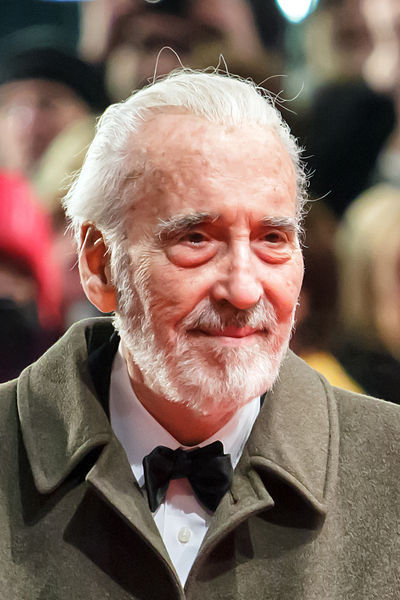Remembering Christopher Lee: the monster and the man

June 16, 2015
On screen, he was Dracula, Sherlock Holmes, Rasputin, Saruman and Count Dooku. In life, he was husband, author, singer and World War II hero as a former intelligence officer and Nazi hunter.
Christopher Lee spent much of his life a living legend. Lee passed last Sunday, June 7, at age 93, a giant of the silver screen. Lee is survived by his wife of 54 years and daughter.
In 1957, after more than a decade of toiling with stock action roles — henchman in “The Crimson Pirate” — and uncredited appearances — spear-carrier in Laurence Olivier’s “Hamlet” — 38-year-old Lee met with the filmmakers of Hammer Films. This British-based production company specialized in schlock horror films, B-films that relied on shock-value and gimmicks. They offered him the role of Frankenstein’s Monster in their forthcoming “The Curse of Frankenstein,” based on hisheight.
In an interview with The Borehamwood and Elstree Times in 2006, Lee later recalled, “They asked me if I wanted the part, I said yes and that was that.”
The film was a success and marked the first time he worked alongside Peter Cushing, a fellow British actor who would become Lee’s closest friend and most frequent co-star. Over the next 15 years, the two became fixtures in Hammer Films, helping to revitalize what many thought was a dying genre. The early horror icons were gone — Bela Lugosi (Dracula), Lon Chaney (The Phantom) and Boris Karloff (Frankenstein’s monster). Hollywood studios had moved on, and it was the Hollywood B-movies, and actors like Lee, that kept the genre going.
Lee gave his characters an effortless gravitas, whether he was playing an English gentleman of dubious nature or a monster created by a mad scientist. Lee is best known for his Dracula, a stoic, well-mannered monster. Tortured and feral, Dracula was Lee’s best work. He would return to the character for six more Hammer horror films.
One of his more underrated pictures from Hammer is its adaptation of Arthur Conan Doyle’s novel“The Hound of the Baskervilles,” in which he plays Sir Henry Baskerville, the tragic victim of a family curse. Centuries after his forefather murders a woman he intended to rape, Lee’s character finds himself in danger at every step by some unseen force. Marking the first time a Sherlock Holmes picture was done in color, Hammer’s “The Hound of the Baskervilles” is filled with a chilling atmosphere, mystery and violence. Lee would return to the world of Sherlock Holmes twice more in his career, first as the famous detective himself in “Sherlock Holmes and the Deadly Necklace,” and later as Mycroft in Billy Wilder’s “The Private Life of Sherlock Holmes.”
In the 1970s, as his collaborations with Hammer waned, Lee scored his biggest financial success yet in “The Man with the Golden Gun” as Francisco Scaramanga alongside Roger Moore as James Bond. Scaramanga is the assassin with a golden gun and a superfluous nipple, who Bond wishes to hunt down before becoming another of his victims.
In a career spanning more than 60 years and 240 movies, Lee appeared on screen more than any other actor in history. More than 40 years following his breakthrough role in “The Curse of Frankenstein,” a new generation of filmgoers watched Lee in his roles of Saruman, the evil white wizard who seeks the one ring for himself in the “Lord of the Rings” trilogy, and as Count Dooku, the Sith Lord and main antagonist in the second trilogy of “Star Wars.”
Lee managed to take a career of these kind of roles and turn it into a life culminating in a knighthood. Unlike the demise of many of his villainous characters, Lee will be missed.


